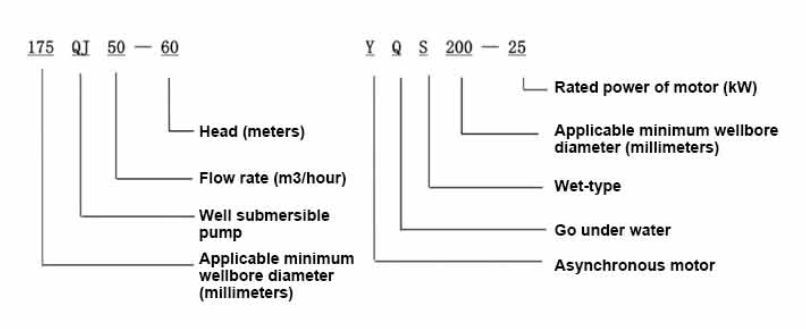Dec . 10, 2024 02:22 Back to list
Choosing the Right Submersible Pump for Your Swimming Pool Needs
The Utility and Features of Pool Submersible Pumps
When it comes to maintaining the cleanliness and hygiene of swimming pools, a reliable pool submersible pump is an essential piece of equipment. These specialized pumps play a crucial role in removing water from pools, especially in situations where water needs to be drained quickly, like after heavy rain or for regular maintenance purposes. This article will explore the functionality, benefits, and features of pool submersible pumps, shedding light on why they are indispensable for pool owners.
Understanding Pool Submersible Pumps
A pool submersible pump is designed to operate underwater, effectively removing water from the pool area. These pumps are typically electric and are equipped with a hermetically sealed motor, which allows them to function while submerged. Unlike traditional pumps that are installed above the water surface, submersible pumps are submerged in the water they are tasked to remove, making them efficient and effective for various applications, including draining, emptying, and managing excess water.
Key Benefits
1. Efficient Water Removal
Submersible pumps are highly efficient at removing water from pools. Their design allows for the rapid expulsion of water, making them ideal for emergency situations where prompt water removal is necessary. Whether it’s due to heavy rainfall, a pool leak, or a planned cleaning session, a submersible pump can quickly and effectively lower water levels.
2. Versatile Applications
Beyond just pools, submersible pumps have versatile applications. They can be used in various contexts, such as draining flooded basements, emptying ponds, or managing water in construction sites. Their adaptability makes them a valuable tool for homeowners and professionals alike.
3. Compact Design
The compact design of pool submersible pumps allows them to fit in tight spaces. This is particularly beneficial when dealing with smaller pools or when the pool area is surrounded by landscaping that limits access. The portability of these pumps makes them user-friendly and easy to store when not in use.
4
. Reduced Noise LevelsOne of the advantages of using submersible pumps is their relatively low noise levels compared to above-ground pumps. The water around the pump helps dampen the sound, making them less intrusive during operation. This can be particularly important for residential areas, where noise pollution may be a concern.
pool submersible pump

Key Features to Look For
When selecting a pool submersible pump, various features should be considered to ensure efficiency and reliability
1. Power Output
The power output of the pump, usually measured in horsepower (HP), will determine how quickly and efficiently it can remove water. For residential pools, a pump with ¼ HP to 1 HP is typically sufficient, depending on the pool size and the situation.
2. Flow Rate
The flow rate, often measured in gallons per minute (GPM), indicates how much water the pump can move within a specific timeframe. A higher flow rate means faster water removal, which is critical during emergencies.
3. Automatic vs. Manual Operation
Some submersible pumps offer automatic operation, which can detect water levels and turn on or off as needed. This feature is particularly beneficial for maintaining optimal water levels without constant monitoring.
4. Durability
Durability is a key consideration when selecting a pump. Look for models with corrosion-resistant materials, especially if the pump will be used in chlorine-treated pools. A robust design will ensure longevity and reliability.
Conclusion
A pool submersible pump is undoubtedly a vital tool for pool maintenance and management. Its efficiency in water removal, versatility, compact design, and relatively quieter operation make it an excellent choice for homeowners and pool service professionals. By understanding the key features and benefits of these pumps, pool owners can make informed decisions about their maintenance needs, ensuring a clean, safe, and enjoyable swimming environment. Ultimately, investing in a quality submersible pump can save time and effort, allowing owners to focus on enjoying their pools rather than worrying about water levels.
-
Submersible Water Pump: The Efficient 'Power Pioneer' of the Underwater World
NewsJul.01,2025
-
Submersible Pond Pump: The Hidden Guardian of Water Landscape Ecology
NewsJul.01,2025
-
Stainless Well Pump: A Reliable and Durable Pumping Main Force
NewsJul.01,2025
-
Stainless Steel Submersible Pump: An Efficient and Versatile Tool for Underwater Operations
NewsJul.01,2025
-
Deep Well Submersible Pump: An Efficient 'Sucker' of Groundwater Sources
NewsJul.01,2025
-
Deep Water Well Pump: An Efficient 'Sucker' of Groundwater Sources
NewsJul.01,2025
-
 Submersible Water Pump: The Efficient 'Power Pioneer' of the Underwater WorldIn the field of hydraulic equipment, the Submersible Water Pump has become the core equipment for underwater operations and water resource transportation due to its unique design and excellent performance.Detail
Submersible Water Pump: The Efficient 'Power Pioneer' of the Underwater WorldIn the field of hydraulic equipment, the Submersible Water Pump has become the core equipment for underwater operations and water resource transportation due to its unique design and excellent performance.Detail -
 Submersible Pond Pump: The Hidden Guardian of Water Landscape EcologyIn courtyard landscapes, ecological ponds, and even small-scale water conservancy projects, there is a silent yet indispensable equipment - the Submersible Pond Pump.Detail
Submersible Pond Pump: The Hidden Guardian of Water Landscape EcologyIn courtyard landscapes, ecological ponds, and even small-scale water conservancy projects, there is a silent yet indispensable equipment - the Submersible Pond Pump.Detail -
 Stainless Well Pump: A Reliable and Durable Pumping Main ForceIn the field of water resource transportation, Stainless Well Pump has become the core equipment for various pumping scenarios with its excellent performance and reliable quality.Detail
Stainless Well Pump: A Reliable and Durable Pumping Main ForceIn the field of water resource transportation, Stainless Well Pump has become the core equipment for various pumping scenarios with its excellent performance and reliable quality.Detail
